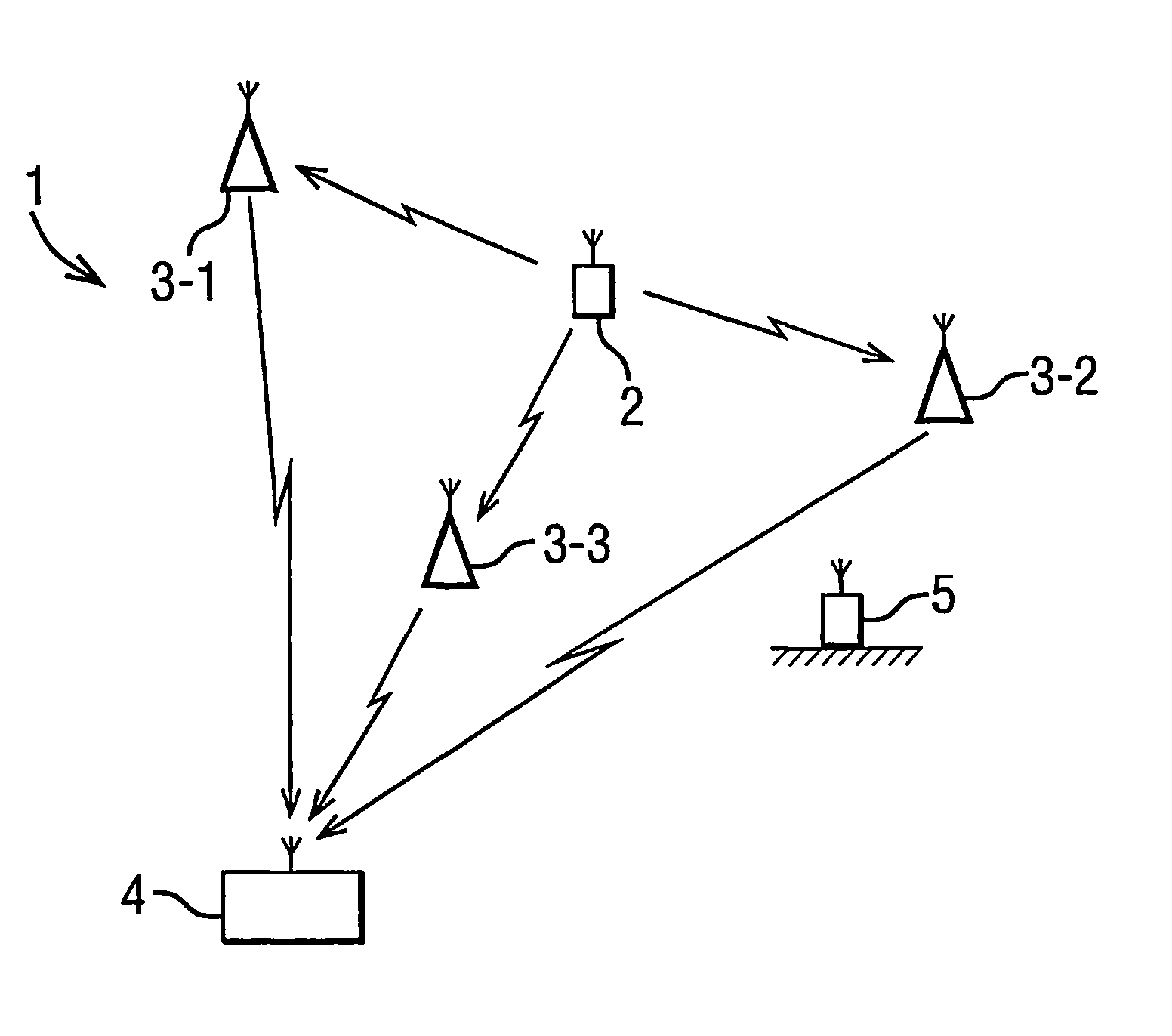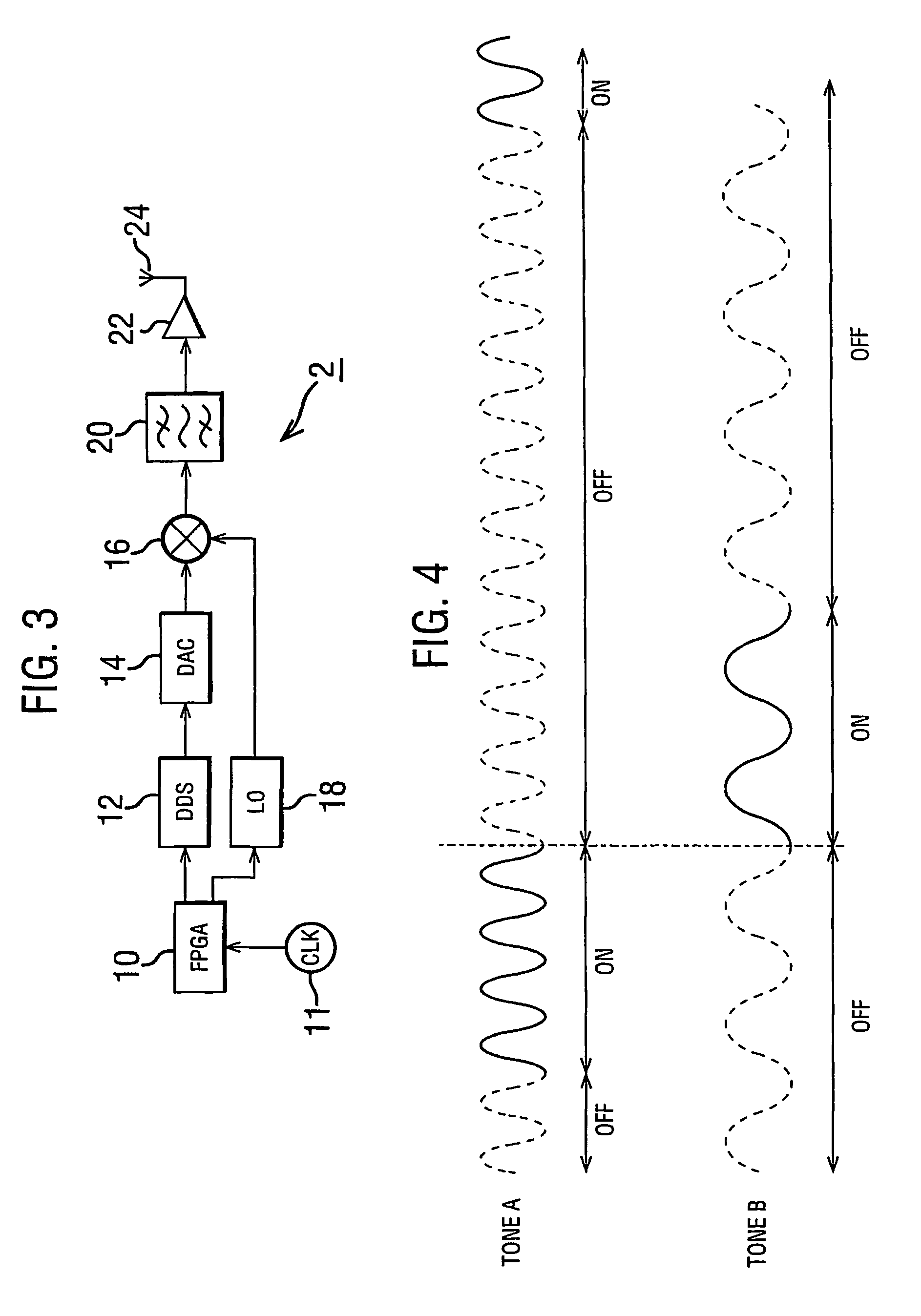Tag tracking
a positioning system and positioning technology, applied in the direction of speed measurement using gyroscopic effects, gyroscope/turn-sensitive devices, reradiation, etc., can solve the problems of phase ambiguity problem, impracticality of using these frequencies, and unsuitable for use in the system for tracking the movement of competitors in a race or similar sporting event, so as to reduce the computational complexity of position calculations and simplify the design or the tag
- Summary
- Abstract
- Description
- Claims
- Application Information
AI Technical Summary
Benefits of technology
Problems solved by technology
Method used
Image
Examples
first embodiment
Overview
[0042]FIG. 1 illustrates the tracking environment 1 in which the tracking system of the present embodiment operates. The tracking system is used in this embodiment for tracking the position of a mobile tag 2 which is attached to a jockey on a horse (not shown) which is to be tracked. The mobile tag 2 carried by the jockey transmits a signal which is received, in this embodiment, by three fixed receivers 3-1, 3-2 and 3-3. The receivers 3 process the received signals and transmit the processed signals to a position processor 4 which then calculates the position of the mobile tag 2 from the signals received from the receivers 3. In this embodiment, the mobile tag 2 transmits two tones (tone A and tone B) of different frequency which enables the system to be able to determine the absolute position of the mobile tag over a relatively large operating range whilst maintaining position sensing accuracy. The reason for this will now be described with reference to FIG. 2.
[0043]When a ...
second embodiment
[0062]In the first embodiment, it was assumed that the clocks in the tag and in the receivers 3 were synchronised to one another. Whilst this is possible to achieve, it is impractical for most applications. A second embodiment will now be described in which the tag and the receivers are not synchronised. In this embodiment, the mobile tag 2 has the same general architecture as the mobile tag 2 used in the first embodiment. In this embodiment, a network calibration technique is used to account for the lack of synchronisation between the receivers 3. This calibration technique uses signals transmitted from a fixed tag 5 whose position is known and which is constructed and operates in the same way as the mobile tag 2.
[0063]In this embodiment, the processing carried out by the digital signal processor 42 in each receiver 3 is different to the processing carried out in the DSP 42 used in the first embodiment. A more detailed description will now be given of the operation of the ADC 40 an...
third embodiment
[0086]In the first and second embodiments described above, the position of a single mobile tag was determined and then tracked. A third embodiment will now be described in which there is more than one mobile tag 2 to be tracked. FIG. 11 is a schematic flow chart illustrating the operation of this embodiment for tracking N tags simultaneously. At step S11-1, tag 1 transmits a chirp. This chirp is received by receivers 1, 2 and 3 at steps S11-3, S11-5 and S11-7 respectively. Each of the receivers 1, 2 and 3 processes the chirp and transmits the phase measurement data to the position processor. In step S11-9, tag 2 transmits a chirp. This chirp is received by receivers 1, 2 and 3 at steps S11-11, S11-13 and S11-15 respectively. Again, the receivers process the received chirp and transmit the phase measurement data to the position processor. This process continues until the last tag, tag N, transmits a chirp at step S11-17 which chirp is received by the receivers 1, 2 and 3 at steps S11...
PUM
 Login to View More
Login to View More Abstract
Description
Claims
Application Information
 Login to View More
Login to View More - R&D
- Intellectual Property
- Life Sciences
- Materials
- Tech Scout
- Unparalleled Data Quality
- Higher Quality Content
- 60% Fewer Hallucinations
Browse by: Latest US Patents, China's latest patents, Technical Efficacy Thesaurus, Application Domain, Technology Topic, Popular Technical Reports.
© 2025 PatSnap. All rights reserved.Legal|Privacy policy|Modern Slavery Act Transparency Statement|Sitemap|About US| Contact US: help@patsnap.com



